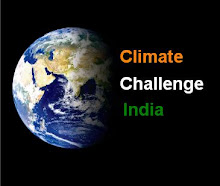I am trying to forget the text books I had when I went to school. I can't! But that may not be all bad.
I have been looking at the Karnataka state syllabus text books for standards 4-10. Specifically, I have begun looking at Environmental Science and Geography. As you can probably imagine, it has been a FEW years since I was in those standards myself.
But the text books were SO BAD in my time that I can't forget them, try as I might! They were perhaps the worst-ever texts that my generation of kids had to suffer. The adjectives that come to mind when I think of them include (but are not limited to) vapid, uninspired, dull, dreary, boring, unimaginative, colourless (literally and otherwise), and the phrase, "what dead mind came up with this DRIVEL?" [don't know these words? Look them up here]
This generation of kids have much better text books. They have at least four important improvements that I like very much:
- Every lesson begins with a set of competencies and learning outcomes expected at the end of that lesson.
- Every lesson ends with various components that reinforce what was learned in the lesson.
- The lessons address the student in the second person (singular). Our text books never spoke to us! They kind of dribbled and we kind of caught it. Yes, yes! Disgusting, I know. But that's how it was.
- The lessons suggest things that kids can look at in their daily lives and in some way try to connect the subject to daily life.
The text books are only one part of learning.
The human teacher is a vital component that no text book can ever replace. In the hands of a good teacher, the whole world becomes a text book for learning. And that learning is
exciting and can provoke the best in the human mind and heart. That's how my own teachers in Kamala Nehru Makkala Mandira, National High School, National College (all in Bangalore), and at universities in the U.S.A. made learning exciting for me. I became a teacher because I wanted to be like them. (More about this elsewhere).
Back to the text books for a little while...
Climate change as a topic is not particularly dealt with in the text books I have been able to get so far. It is here that I find them wanting.
Why is it important to look at issues such as climate change?
Well, it is important to connect kids' (well, our) lives to global issues as well.
Why is this important?
We must look at large issues like this and make connections between the syllabus and (1) how we are part of the problem, (2) how we are impacted, and (3) how we can be part of the solution. This will help kids better learn the complexities of the world and how they may participate in it. [In my teaching experience, I have found that kids love this kind of connection. I have even dealt with some extremely difficult and touchy social issues sometimes and found the kids to be very curious, compassionate, and capable.]
Doing this would also help in another very important way. Life is not tidy. The world is not tidy. Neither life nor the world is neatly separated into geography, physics, mathematics, language, chemistry, biology, etc. While our education teaches each subject separately, it must also show us (kids) that everything is inter-related. We need to think and understand how things are interconnected. In my last blog, I posed two assignments. They demand such thinking.
The surest way to bring in such thinking in our classrooms is by helping teachers to provoke us kids into asking such questions and thinking about the interconnections. For this, the teachers need to be given the knowledge and methods to teach this way. That is not enough. The schools, the education systems, should encourage them to think creatively and to excite the young students' imagination.
As former-President Kalam calls it, to "ignite young minds."
And hearts.
Climate change is a topic that can do these things. CSM is out to help students, teachers, and schools ignite our young minds on the topic of climate change. What we learn by studying this issue can help us learn many other things too.
Talk to CSM. We can assist you.
"Shabhaash, India!"
Traditional manual block-printing
Beauty is green! Beauty is climate-affirmative!
Art is beauty! Ergo, art can be climate-affirmative!



No comments:
Post a Comment